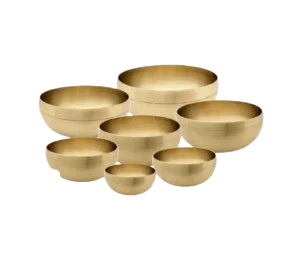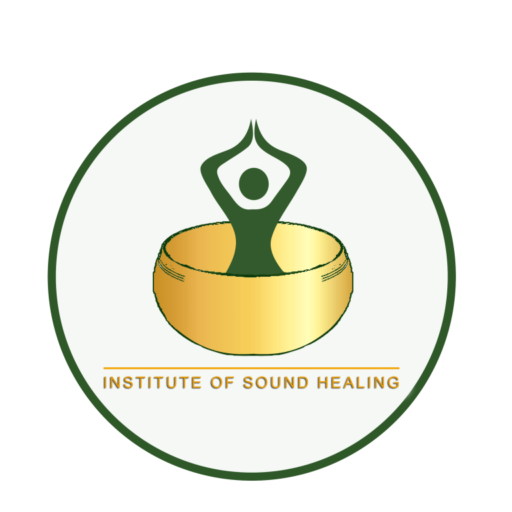Singing Bowl Therapy: History, Benefits & How to Get Started
In the Institute Of Sound Healing, we understand the importance of maintaining harmony and alignment within oneself and singing bowls have been used for centuries to obtain this. In today’s world, where stress and anxiety have taken a front seat, ancient healing practices are making a powerful comeback. One such practice is singing bowl therapy which is a powerful method that combines sound, vibration, and mindfulness to harmonize the body, mind, and spirit.
This works on the basic laws of physics– resonance and vibration. These bowls are typically made from a combination of metals such as zinc, tin, copper, iron, because the proportion and the material makes an entire world of difference in its effect.
Whether you want to enhance your meditation practice or explore natural healing techniques, singing bowl healing offers a profound and accessible way to reconnect with inner peace (source).
What Is Singing Bowl Therapy and Its Historic Significance
Singing bowl therapy, also known as sound bowl healing or Tibetan singing bowl therapy, uses metal or crystal bowls that produce rich, harmonic tones when struck or circled with a mallet. This sets the bowl’s material to vibrate and produce sound waves. This can be an extremely immersive experience and the vibration from these singing bowls can heal various physiological and psychological issues. These soothing sounds and vibrations are believed to promote healing by reducing stress, enhancing meditation, and balancing the body’s energy centers, or chakras. They also clear any energy blockages throughout the body.
Origin of Singing Bowls
The exact origins of singing bowls are shrouded in mystery, but they are most closely associated with the Himalayan regions( these bowls were also popularly known as “Himalayan Singing Bowls), particularly Tibet, Nepal, and Northern India. Traditionally made from an amalgamation of seven metals, each metal is believed to represent a celestial body (gold for the sun, silver for the moon, zinc, tin, iron and so on). The rich deep sound from these bowls have been used for centuries in religious rituals, spiritual ceremonies, and Ayurvedic healing practices.
Singing bowls were often used by Tibetan monks in meditation and healing rituals. Over time, the therapeutic value of singing bowl healing became recognized in the West, especially with the rise of alternative and holistic wellness movements, carving a niche and marking a profound cultural significance.
Also read – The Science Behind Binaural Beats and Their Role in Sound Healing

How Singing Bowl Therapy Works
According to research music can have a neurochemical effect on your physiological and emotional state (source) and can improve your health and well-being. These singing bowls that appeared approximately during 580-460 BC are said to produce sound frequencies and vibrations that can have profound effects on the body and mind.
1. Vibrational Healing
The human body is made up of approximately 60% water. Vibrations from the singing bowl pass through the body, stimulating tissues, organs, and cells. This helps release energy blockages and encourages self-healing on a cellular level.
2. Brainwave Entrainment
When the bowl is played, it emits a tone that coaxes the brain to shift into meditative states (alpha and theta waves). This can enhance singing bowl meditation, promote better sleep, control blood sugar levels and reduce anxiety (source).
3. Chakra Alignment
In spiritual practices, different tones correspond to specific chakras. Our body has different energy centers known as chakras that are located in different parts of our body. We have 7 primary chakras (Root Chakra, Sacral Chakra, Solar Plexus Chakra, Heart Chakra, Throat Chakra, Third Eye Chakra and the Crown Chakra) that are known to facilitate energy flow in our body. Practitioners may use bowls tuned to particular frequencies to balance and clear energy flow through the chakras.
Benefits of Singing Bowl Therapy
Singing bowl therapy offers a wide range of benefits for the body, mind, and soul. Here are some of the most well-documented effects:
1. Stress Reduction and Relaxation
According to a research paper published by The Journal Of Oriental Research Madras (source), one of the most immediate benefits of singing bowl healing is a deep sense of calm. The calming tones help slow the heart rate and relax tense muscles, shifting the body out of “fight or flight” mode and into a parasympathetic state.
2. Anxiety and Depression Relief
Studies (Source) suggest that the use of sound healing instruments, including singing bowls, may reduce symptoms of depression and anxiety. The meditative soundscape helps quiet the mind and ease emotional distress.
3. Improved Sleep
Struggling with insomnia? Incorporating singing bowl meditation into your evening routine can help you fall asleep faster and enjoy deeper rest. The vibrations help signal the body that it’s safe to unwind.
4. Mental Clarity and Focus
Singing bowls enhance mindfulness and concentration, making them perfect for both beginners and seasoned meditators. The consistent tones help anchor the mind, clearing away mental clutter.
5. Energetic Balance
Regular singing bowl sessions can help unblock and align your chakras, leading to better energy flow and emotional balance. Some practitioners believe this can even support the body’s natural healing processes.
6. Pain Management
While not a substitute for medical treatment, singing bowl therapy may help reduce physical pain through relaxation and vibrational massage. People with chronic pain conditions often report relief after sessions. Did you know that those tense muscles are a result of an emotional reaction to pain? More the stress, more the emotional and physical pain. Singing bowls help clear blockages, relieving muscular tensions and also hit the spot that is casing this.
How to Get Started with Singing Bowl Meditation
Whether you are new to the practice and want to pursue the art of sound healing, here is how you can start:
1. Choose The Right Kind Of Bowl
When selecting a bowl, consider its size, material, and tone because these factors can deeply control the effect of the singing bowl. Smaller bowls are good for higher-pitched tones and chakra tuning, while larger bowls produce deeper, grounding vibrations.
2. Learn the Technique Properly
At the Institute of Sound Healing, we ensure proper training to all budding practitioners. Start by gently striking the bowl with a mallet and letting the sound ring out. You can also circle the rim with the mallet in a steady motion to produce a continuous tone. Experiment with volume, rhythm, and placement to find what feels most calming.
3. Create a Sacred Space
Set up a quiet corner for your singing bowl meditation practice. Use candles, incense, or crystals to enhance the experience. Sit comfortably, close your eyes, and focus on your breath while playing the bowl.
4. Join Our Sessions
If you are new to singing bowl therapy, join our guided session. We demonstrate advanced techniques.
Singing bowl therapy is more than just a trend—it is an ancient practice rooted in centuries of spiritual and healing traditions. This vibrational therapy can completely stimulate the energy flow in your body. This is an immersive experience to unlock something deep within yourself. Channel the healing power of sound and indulge yourself completely.


One Response